WATCH: West Cork's Baltimore RNLI is always ready for action
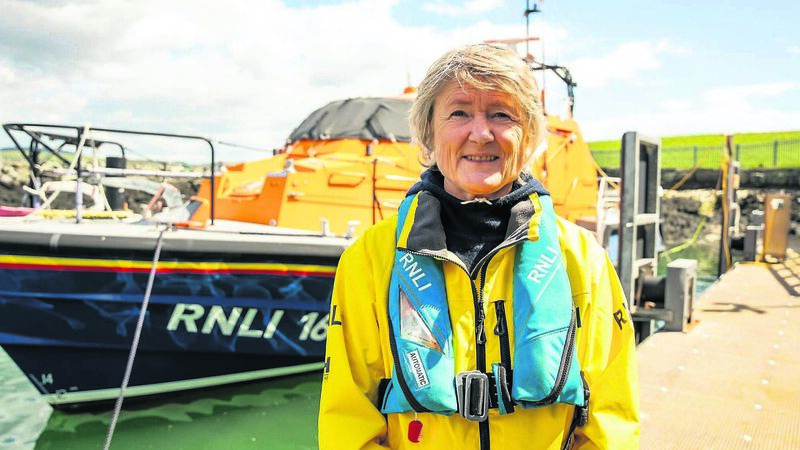
Maria Coleman, who is based at the Baltimore RNLI Station, having joined last year. Pictures by Noel Sweeney
AS the Royal National Lifeboat Institution (RNLI) reaches its 200th anniversary, it is a good time to reflect on the extra-ordinary contributions the voluntary organisation has made to the safety and well-being of communities along the Cork coast.
In a series of articles over the next two weeks, in our Cork Coasts series, we will meet some of its brave volunteers in the county, who, at any given time, will ready themselves to bring safety to the sea goers and seafarers who find themselves battling the elements of the wild Atlantic Ocean; coastal walkers and anglers in difficulty, or anyone caught up in a maritime incident.
With its volunteers often placing themselves in harm’s way to save others, the RNLI is a community service that demands selflessness, dedication, as well as physical and mental fitness.
From the rugged coast of Baltimore and its wondrous surrounding archipelago, to the coastal hub of Youghal, the RNLI’s lifeboat stations and its volunteers along the south coast have become a cornerstone in Cork’s marine communities.
Since the organisation’s foundation in 1824, the UK and Ireland-wide RNLI has served as a guardian of maritime communities around the islands of Britain and Ireland, with the first stations on Irish soil active 199 years ago, in 1825. That year, stations at Courtmacsherry in West Cork and Arklow in Co. Wicklow were the first functional stations.
It is believed, however, that although operational without a station house, Courtmacsherry had the first active vessel for life-saving purposes, while the station at Arklow had a building but did not have an active boat for a number of months.
Since the RNLI’s inception, countless lives have been saved across both islands, and to this day, its service on the island of Ireland, north and south, remains boundary-less.
Certainly, technological advances have brought developments in vessel build, speed, navigation and sea sturdiness, yet, 200 years on, it is still community, dedication, and a love and respect of the sea that remains the true driving force of the RNLI.
One of the cultural elements that has remained since 1824 is the term ‘a shout’, the in-house phrase for a call-out. Initially, the coxswain of the boat would run around the fishing village shouting for the crew to muster and assemble. Despite all the technology available to today to alert a crew, members still refer to call-outs as ‘a shout’.
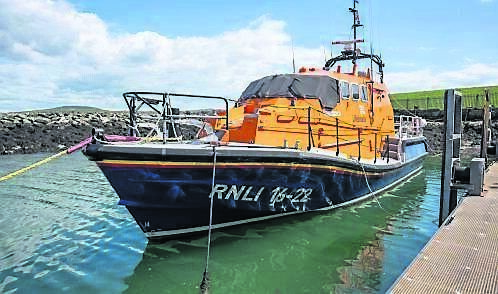
The first of the eight Cork RNLI stations we visited was Baltimore, where we met three of its team, Maria Coleman, Cathal Cottrell, and Kieran Cotter, who provide first-hand accounts of their rescue experiences and insights to the inner workings of the station and what the RNLI means to their community.
Some of the station’s past and present members were instrumental in bringing people to safety during the Fastnet disaster of 1979 and the Sinking of Rambler 100, a vessel that went down near the Fastnet in 2011.
Former Olympic single-handed sailor who represented Ireland in the Sydney and Athens Olympics, avid surfer and IT professional, Maria Coleman, answered a call from within herself to join the RNLI in early 2023.
She was working from home a lot more and, with her experiences at sea with the sea, she saw it would be mutually beneficial to join up. From the mooring to the rear of the Baltimore station, she reflects on her experience since.
“I joined the crew here about a year ago and I’m now actively helping out with the boat,” said Maria.
“I’ve had loads of support joining and with all the training they’ve helped immensely along the way, they really put you at ease and welcome you into the team.
The Volunteers here have a massive experience between them.
"So the guys here have been really helpful, looking after me during my training.
“We’re in a pretty exposed part of West Cork, so we get to see a bit of action with the islands, quite a few medivacs (medical evacuations), and looking out for the Fastnet boat race.
“A couple of the guys here were involved in the 1979 Fastnet disaster and there’s a couple of guys involved with the Rambler (sinking of the Rambler 100 in 2011). And they’re passing on that experience. So it’s really good to be with those kinds of people.”
While RNLI rescues are mostly associated with difficulties at sea, a key part of what they do is to provide medical evacuations for people living on the surrounding islands. Depending on the situation and a particular volunteer’s training, they may act like first responders, or work in tandem with medical units, such as the Coast Guard, in the transportation of people in need of medical assistance to the mainland.
“We have a lot of islands around us and, with residents on them, sometimes there can be an accident or they can have an unexpected heart attack or something like that. If the helicopter can’t get there, they may need the lifeboat as well.
So we get called out at any time of the day and go out there, either pick them up and bring them in or help with the helicopter making a rescue.
"Usually then, when we get them back to shore, an ambulance will take them up to CUH Cork or the nearest hospital.
“We do medical training as part of the lifeboat. You opt in and do different parts of it, but the most important thing is to get them to the professionals on the shore as fast as possible.”
In 1905, the RNLI received its firsts motorised boats. Till then it would take crews about four hours to row a distance akin to that of Baltimore across to Cape Clear island. These days, the same distance might take 20 minutes.
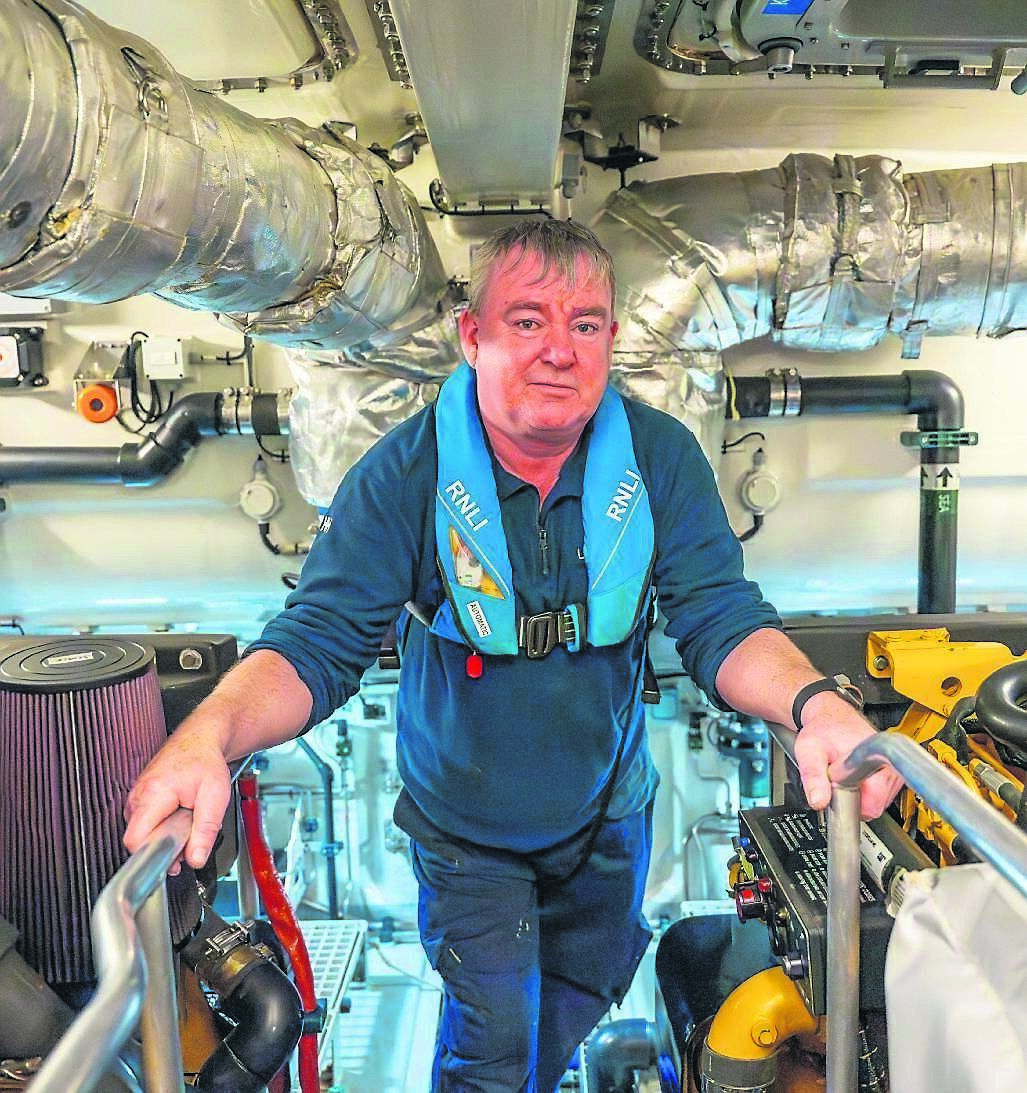
Baltimore native Cathal Cottrell, not unlike Maria, spends much of his down time sailing, and is the third generation of his family to serve the RNLI. His grandfather was a crew member, and following in the footsteps of his father who was the station mechanic, Cathal has taken on the role since 1988.
The Baltimore station has been in existence since 1915, but with the War of Independence looming and all that that followed it, four years would pass before a lifeboat arrived there. It was called The Connacht, but for the times they were, its name was changed to The Shamrock.
“My grandfather and granduncle were on the boat,” said Cathal. “Then my father became a mechanic and then another fellow, Joe Regan, had it for a year, then I took over from Joe. So, my job is to maintain the station and the equipment and the boats.”
Since Cathal joined in 1988, the lifeboats have fast evolved to be stronger, faster, and safer. The current boat at the station, the Allen Massey, has two 1,000 horsepower engines, whereas the engine of the previous vessel had a total 850 horsepower.
“So, we’ve gone a good step up,” said Cathal.. “We’ll burn 184 litres per engine per hour at full speed and do a top speed of 25 knots.
So, we’re on the scene quicker and can stay on longer.
Showing me around the lifeboat, Cathal points to the wide range of modern safety equipment.
“If you look around all the equipment, we’re all harnessed in and all these seats are with shocks and dampers like in a car, so that they protect our backs and everything is operated from the armrest to the seat with trackballs.
“So, we don’t have to move off the seats. It makes our job easier and safer. So, we’re not walking around the boat in bad weather, we can do everything from the seat.”
Kieran Cotter, a local shopkeeper , has been a member of the RNLI since 1975. A retired Coxswain, these days he volunteers as a deputy launch authority.
“I was a crew member until I retired in December, 2020,” he said. “I was a second coxswain from I think about 1983 to 1989 and coxswain from 1989 to 2020.”
Four years into his time, Kieran was part of the Baltimore crew who, along with lifeboats from Ballycotton and Dunmore East, attended to the Fastnet Yacht Race disaster in 1979, when 15 people died after their yachts capsized amidst a major storm that hit the south coast.
“I was out for the 22 hours,” Kieran said. “We towed in two yachts. We towed a yacht called Regardless. First of all, we left here and the first boat carrying a cameraman for the Examiner was reported overdue in Schull. So we went out looking for her.
“At the time, mobile phones didn’t exist. VHF radio was really in its infancy.
Not so many boats would have a VHF radio. So a lot of boats, they’d go out and they’d have no communication with the shore.
"And so we went into Cape Clear. I’m originally from there and my parents had a bar there. We made a couple of phone calls and discovered that at around 11pm or 11.30pm that night, the boat had arrived back in Scull with everyone safe.
“Soon after that, we got a call to say a yacht called Regardless was in difficulty south-east of the Fastnet, and we proceeded to the area. But finding her was difficult because we didn’t have a VHF direction finder.
“There was lots of light, there were lots of yachts. So the Irish naval ship Deirdre located the yacht and she had a rudder damaged. It was cracked, so she was unable to steer. And we towed her back to Baltimore and arrived in here. We probably took her around 3am, and arrived here at around 8am. It was extremely strong wind.
“We were just in at the pier when we were called again to save another boat called Marionette, which was in difficulty somewhere south to southwest off the Galley Head Lighthouse. so we proceeded out there.
“And by the time we got back to Baltimore that evening, it was a lovely sunny evening. And that was about 8pm.” Kieran recalls.
The alarm bell can sound at any time, 24/7, and at sea any myriad of situations can await.
As an RNLI boat crew volunteer, you have to be ready; to drop what you’re doing and answer the call. Between receiving that and arriving at the station, roughly 12 minutes is an acceptable amount of time. Though in a reasonably small area like Baltimore, volunteers usually arrive within around six minutes.
For Maria Coleman, who is quite new to the organisation, how is it been adjusting her lifestyle to answer a ‘shout’ at any given time?
“There’s a bit of apprehension, because you don’t know how bad it’s going to be,” she said. You could also be gone for two or three days if it’s a long way out shore.
“So you don’t know really until you’re already going out to harbour what it’s about and how serious it is and how quick we have to be,” Maria said.
In a nautically vibrant area like Baltimore, an RNLI station, centred among its bobbing jet skis, ribs, craft sailing vessels and island ferries, is a conduit for the reassurance felt by local and visiting seafarers, and often, it is the glue that holds a maritime community together.
“I think, as a village, it’s a critical service, not just for the village, but there’s so many people in the village who invest their time in it, and care for people out at sea,” said Maria.
“And I think it’s very integral in the whole life of very many people in the village because of that.
“We’ve a lot of fishermen, we have ferry guys, we have the pleasure craft sailing, there’s canoes, there’s ribs, jet skis, everything coming down from the city, going out from here.
“And I think that’s very reassuring, especially for the fishermen and the ferrymen that are out in the middle of winter as well. It’s an honour really to be able to help.”
TOMORROW: We visit Courtmacsherry RNLI in our series.
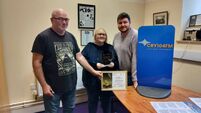
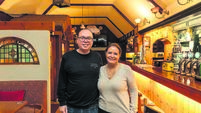

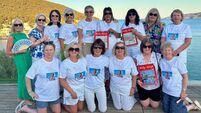



 App?
App?





